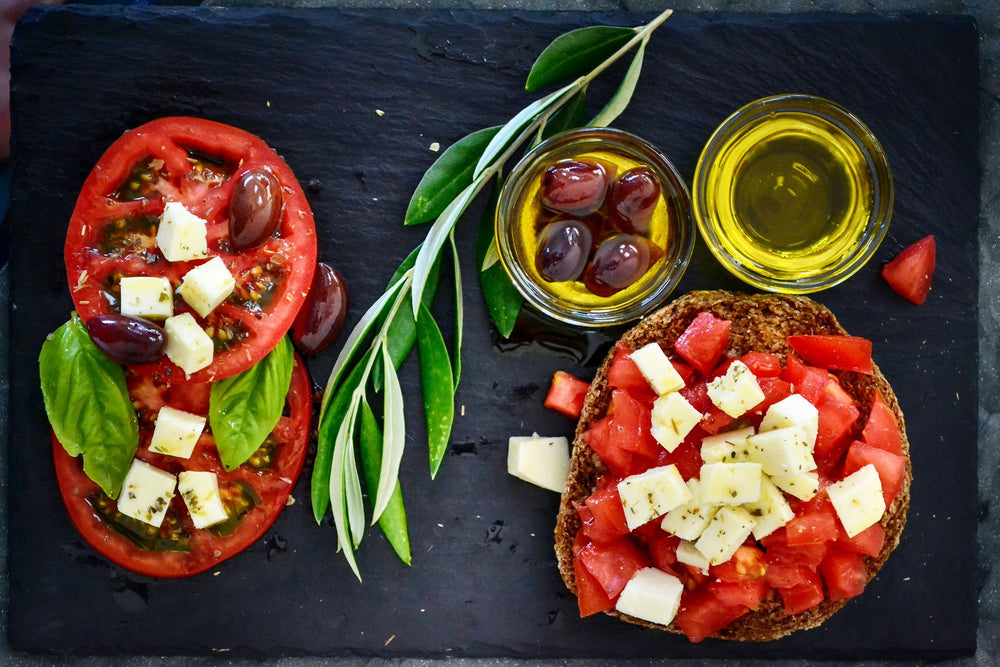News
How to Get Started With the Mediterranean Diet

At the beginning of every year, we’re bombarded with “Near Year, New Me” messages that stress the need to make significant changes to your lifestyle. This is particularly true for topics such as diet and health, with many companies and brands promising “quick fixes” and fad diets for weight loss, shifting the focus from well-being to looks.
However, when it comes to eating habits, the most powerful and sustainable changes need to be based on holistic and research-backed advice. Today, we’d like to tell you more about one of the oldest and most well-researched eating patterns that’s guaranteed to benefit your health and well-being - the Mediterranean Diet.

Image: DanaTentis / Pixabay
What is the Mediterranean diet?
The concept of the Mediterranean Diet began in the 1950s, when an American researcher named Ancel Keys began the Seven Countries Study. This long-term study investigated links between diet and cardiovascular disease around the world.
As part of the study, Keys and his team looked at eating patterns in Greece and Italy in the 1950s and 1960s. They found those eating patterns were linked with lower rates of coronary artery disease (compared with eating patterns in the U.S. and Northern Europe). Thus, the heart-healthy Mediterranean Diet was born.
The Mediterranean Diet offers a way of eating that’s linked to many health benefits: it’s proven to lower the risk of cardiovascular disease, type-2 diabetes, certain types of cancers, and it’s associated with lower body-mass index and longevity.
Main principles
The Mediterranean diet (sometimes called MedDiet) is the generic name for the traditional dietary patterns of individuals living in the Mediterranean region. This dietary pattern is abundant in minimally processed plant-based foods, rich in monounsaturated fat from olive oil but lower in saturated fat, meats, and dairy products.
It’s also characterized by cooking seasonal and local produce, and enjoying socializing with meals. Let’s have a closer look at the main aspects of the Mediterranean eating patterns below.

Image: Mediterranean Diet pyramid by Fundacion Dieta Mediterrànea
Load up on fruit & veg
The Mediterranean diet puts a greater focus on plant foods compared to many other diets. Foods like fruits, vegetables, whole grains, and legumes are the main ingredients in meals and snacks.
Include vegetables (like leafy greens, onions, garlic, tomatoes, and peppers), in every meal and have fresh fruits as desserts or snacks. Some traditional plant-rich recipes you can try are veggie-packed frittata, Mediterranean quinoa salad, or Mediterranean shrimp orzo salad.
Opt for whole grains
Unlike many other diets, the Mediterranean eating style doesn’t exclude or limit any carbohydrates. However, it’s recommended to only eat whole grains, be it bread, pasta, or flour used in baking. Quinoa, barley, rye, orzo, or wholegrain rice are also good choices. You should avoid refined grains, such as white bread, white pasta, and pizza dough containing white flour, as these don’t have much fiber or minerals left.
Befriend beans, nuts, seeds and legumes
The Mediterranean Diet also includes the daily consumption of beans and legumes as a source of plant protein. Make sure to befriend beans, peas, lentils, pulses, and chickpeas. Aim for 1-3 portions of beans or legumes daily and add nuts, seeds, and nut butter to your cereal, salads or yogurt. Nuts like almonds or walnuts are especially rich in heart-healthy omega-3 fatty acids and polyunsaturated fats. Macadamia nuts, hazelnuts, cashews, sunflower seeds, pumpkin seeds, almond butter, and peanut butter are great choices, too.

Image: Yilmazfatih / Pixabay
Choose fish over meat & go easy on dairy products
The traditional Mediterranean diet doesn’t promote red meat consumption and only includes occasional portions of poultry (2-4 servings per week). However, eating 3-6 portions of fish and seafood weekly is part of the Mediterranean food culture. Choose fish rich in omega-3s, like salmon, sardines, herring, tuna and mackerel.
When it comes to dairy, a traditional Mediterranean diet might include a few servings a week of cheese or yogurt. You should opt for less processed dairy products – think flavorful cheeses like Parmesan, feta or part-skim mozzarella instead of processed American slices, and plain Greek yogurt instead of high-sugar flavored varieties.
Olive oil
Along with nuts and seeds, extra-virgin olive oil (EVOO) is the main source of fats in the traditional Mediterranean diet. Olive oil provides monounsaturated fat, which lowers total cholesterol and low-density lipoprotein (or "bad") cholesterol levels. Nuts and seeds also contain monounsaturated fat.
You should use it instead of vegetable oil and animal fats (butter, sour cream, mayo). Drizzle it on salads, cooked veggies or pasta, or use as a dip for bread.
Watch out for sugars
It’s important to understand that the Mediterranean eating pattern is based on minimally processed, natural products. That’s why it’s recommended to avoid commercially prepared baked goods and desserts with lots of added sugars. It’s also recommended to choose water as a drink instead of canned soda.
Conclusion
The Mediterranean diet can be best described as the way of eating that almost everyone can follow to improve their health. As explained by John Hopkins School of Medicine experts, the power lies in small daily choices: “Fish instead of fried chicken. Brown rice instead of a white-flour roll. A handful of nuts instead of chips. Olive oil instead of butter. And plenty of vegetables and fruit. Easy food swaps like these put the heart-healthy, life-extending power of the Mediterranean diet on your plate—simply and deliciously.”

Image: Click and Grow